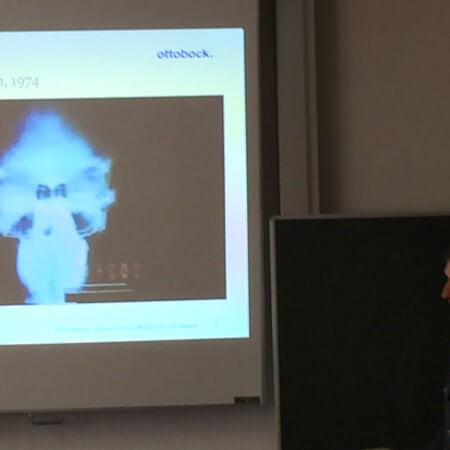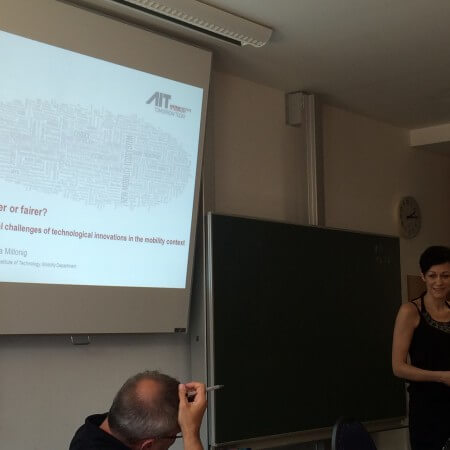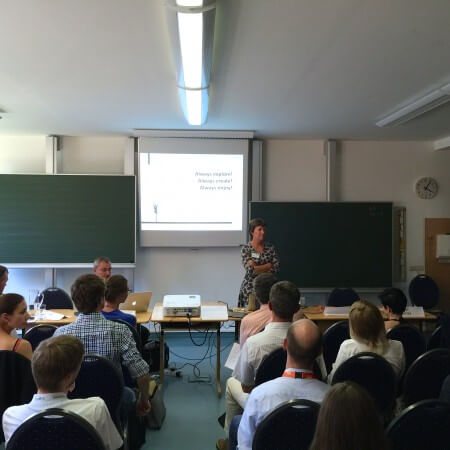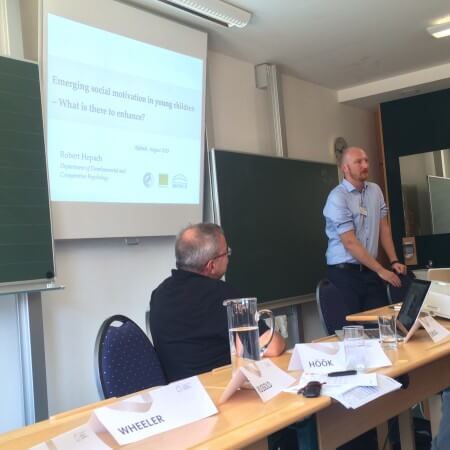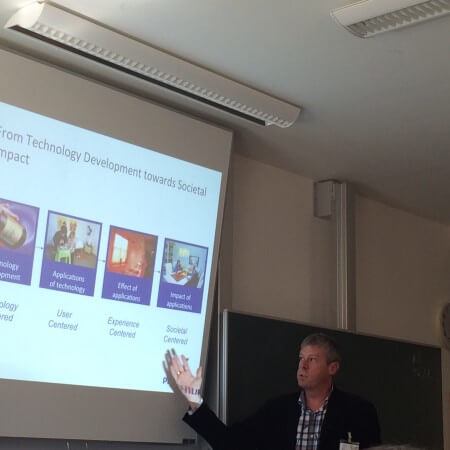At this year’s Alpbach Technology Symposium, Manfred Tscheligi chaired a working group on “Human Enhancement Technologies: Amplifying or Reducing Inequality“, taking place on August 28th, 2015. Key thinkers from academia from various disciplines as well as experts from industry discussed how technology can (or cannot) enhance humans, how such technology needs to be designed, and what challenges individuals as well as society faces. The following experts participated in the working group’s panel:
- Kristina Höök (Professor, School of Computer Science and Communication, KTH Royal Institute of Technology, Stockholm)
- Alexandra Millonig (Scientist, Dynamic Transportation Systems, Mobility Department, AIT Austrian Institute of Technology GmbH, Vienna)
- Boris De Ruyter (Principal Scientist, Philips Research Eindhoven; Professor of Human Interaction with Intelligent Systems, Radboud University, Nijmegen)
- Robert Hepbach (Postdoctoral Research Fellow, Department of Developmental and Comparative Psychology, Max Plack Institute for Revolutionary Anthropology, Leipzig)
- Michael Friedrich Russold (Head, Department of Translational Research, Research and Development, Otto Bock Healthcare Products GmbH, Vienna)
- Michael Wheeler (Professor of Philosophy, Division of Law and Philosophy, University of Sterling)
During the working group, the experts discussed the benefits and risks of human-enhancement technologies as well as the blurring boundaries between humans and technology. Are we becoming hybrid humans or cyborgs, or creating a hybrid society? What comes next?
Summary of the working group
The working group was opened by Manfred Tscheligi (chair of the Breakout Session), starting with asking the participants about enhancements they already have (e.g., glasses, smartphones, …). Then, he gives an overview of human enhancement technologies. Therein, he addresses technologies that enhance our mobility, augment our reality (e.g., interactive contact lenses), and even enter our bodies, for instance, in form of pacemakers, pills, or implants. The speakers of the working group then provided several notions of human enhancement technologies.
Boris de Ruyter (Philips Research Europe and Radboud University, Netherlands) illustrated how Philips’ lighting and personal healthcare systems contribute to increase people’s well-being, for instance in schools, hospitals, and at home. Robert Hepach (Max Planck Institute for Evolutionary Anthropology in Leipzig, Germany), focused on how social motivation emerges in young children, i.e., what would be there to enhance. Additionally, he showed the value of technology for observing and tracking humans to enhance the research on emotions and pro-social behavior. Alexandra Millonig (Austrian Institute of Technology) reflected upon challenges of technological innovations in mobility, such as whether automated vehicles will increase safety, efficiency, or accessibility, and how the future might look like on the road, extending humans’ possibilities to move. Focusing on how humans and technologies form (dynamic) coalitions, Michael Wheeler (University of Stirling, Scotland) proposes that technology becomes part of our ‘cognitive machinery’, what he refers to as the Extended Mind Hypothesis. However, he then poses the question whether we want our mind to be extended in form of a technology to be seamlessly integrated into our lives, or instead would prefer the option of being in dialog with the augmenting technology. Kristina Höök, KTH Royal Institute of Technology (Stockholm), accentuated a perspective on human enhancement technology that highlights the playful, aesthetic bodily experiences with technology, instead of a mere instrumental, efficiency-oriented perspective on technologies and bodies. Opposed to the dualism between mind and body, she argues for taking seriously the interplay of mind, body, and interactive technology. Michael Friedrich Russold from Otto Bock Healthcare Products GmbH, Vienna, gave an overview of the history of prosthesis, arriving at modern ideas of prosthesis. Then, he referred to human enhancement as imagined in fiction (e.g., the Six Million Dollar Man, 1974) and in reality (e.g., cyborgs). He concluded by drawing attention to ethical issues of human enhancement technologies, e.g., costs versus availability, responsibilities, etc.
In the subsequent discussions, the consequences of human enhancement technologies have been intensively discussed. For instance, foreseeing, and thus reacting to consequences is difficult, especially when it comes to effects that are not directly related to using the technology. Who is responsible for the developments at all, e.g., for autonomous cars? Who is responsible for the consequences? Is it the responsibility of policy makers to regulate the design, development, application, or usage? If yes, does it take too long until policy makers react? Is it the role of the developers and researchers? If yes, how does this feed back to policy? Furthermore, trends in technologies have been discussed, such as “Do-it-yourself” (e.g., facilitated by 3D printers, …) and what changes those might bring to the fabrication of human enhancement technologies. Do these trends have the potential to contribute to equality?
See also a great related interview (in German) with Kristina Höök by science.orf.at:
“Technologien, bei der Menschen mit Maschinen interagieren, werden immer wichtiger. Die Gefahr dabei: Der Mensch selbst wird als Maschine betrachtet, die es zu verbessern gilt. Die schwedische IT-Expertin Kristina Höök verfolgt einen anderen Ansatz: Sie stellt Freude und Genuss des eigenen Körpers ins Zentrum der Mensch-Maschine-Interaktion.”
Source: “Technikdesign ist eine politische Arena” – science.ORF.at

